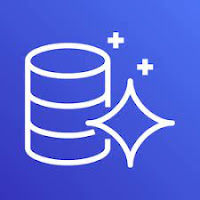A Comprehensive Guide to Database Types: Strengths and Weaknesses
In the ever-evolving landscape of data management, choosing the right database type is crucial for the success of any application or system. Technical professionals, including Database Administrators (DBAs), Database Application Developers, and Architects, need to have a deep understanding of various database types to make informed decisions based on the specific requirements of their projects.
In this comprehensive blog explores into various database types, highlighting their strengths and weaknesses to assist you in making well-informed choices.
Relational Database
Relational databases have been the cornerstone of data management for decades, offering a robust foundation for structured data. They excel in maintaining data integrity and handling complex queries, making them ideal for applications where reliability and consistency are paramount. However, they may face challenges in scaling horizontally, and their structure can be less flexible when dealing with unstructured data.
NoSQL Database
NoSQL databases have gained popularity for their ability to handle large volumes of unstructured data efficiently. They provide excellent scalability and flexibility, making them suitable for applications with diverse data types. However, the trade-off includes potential challenges with ensuring ACID compliance and complex query execution, which may impact their suitability for certain use cases.
NewSQL Database
NewSQL databases aim to bridge the gap between traditional relational databases and NoSQL solutions. They offer the benefits of ACID compliance while maintaining scalability. However, their adoption is limited, and implementing them can be complex, requiring careful consideration of specific use cases and project requirements.
Document-Oriented Database
Document-oriented databases excel in managing semi-structured data by storing information in flexible document formats. They are particularly well-suited for content management and scenarios where data structures evolve frequently. However, they may face limitations in supporting complex queries and could introduce data redundancy in certain situations.
Key-Value Database
Key-value databases focus on simplicity and efficiency, making them ideal for scenarios that demand high-speed read and write operations. They excel in use cases like session management and caching. However, their limitation lies in providing limited query capabilities and lacking support for complex data relationships.
Column-Oriented Database
Column-oriented databases focus on enhancing analytics and query performance, making them well-suited for big data processing and real-time analytics. However, they may face challenges when dealing with transactional workloads and frequent updates, requiring careful consideration based on specific project requirements.
Object-Oriented Database
Object-oriented databases are tailored to align with the principles of object-oriented programming, making them ideal for applications with complex data models. However, their adoption is limited, and they may face challenges in supporting standard SQL queries, requiring careful consideration when integrating them into projects.
Time-Series Database
Time-series databases excel in efficiently handling time-stamped data, making them indispensable for applications like IoT, financial services, and monitoring systems. However, their specialization in time-based data may limit their suitability for non-time-based scenarios, and complex queries might pose challenges.
Wide-Column Store
Wide-column stores offer a hybrid approach, combining elements of relational and NoSQL databases. They are efficient for storing large data volumes and are well-suited for scenarios like data warehousing and big data processing. However, their adoption may require a steeper learning curve, and data modelling complexity should be carefully managed.
Spatial Database
Spatial databases are tailored to handle spatial information, making them essential for Geographic Information Systems (GIS), location-based services, and environmental modelling. However, their specialization may limit their suitability for non-spatial data, and complex queries might pose performance challenges.
Graph Database
Graph databases excel in representing and navigating complex relationships between data points, making them invaluable for applications like social networks and recommendation systems. However, they may face challenges with traditional queries and performance issues when dealing with large datasets.
In-Memory Database
In-memory databases store data in the main memory, providing faster processing speeds and making them ideal for high-performance applications. However, their limitation lies in the amount of available RAM, and there is a risk of potential data loss in case of a system failure, requiring careful consideration based on the application's criticality.
Vector Database
Vector databases specialize in efficiently handling vector-based data, making them suitable for machine learning and data analytics applications. However, their focus on vector data may limit their support for non-vector scenarios, and complex queries might pose challenges that need to be carefully addressed.
Table: Below is a table that facilitates a quick comparison of databases for better understanding of each database.
In conclusion, the diverse landscape of database types provides technical professionals with a plethora of options to choose from, each catering to specific use cases and project requirements. The key lies in understanding the strengths and weaknesses of each database type and aligning them with the goals and characteristics of the application or system at hand.
As technology continues to advance, new database types may emerge, offering innovative solutions to address evolving challenges. Stay informed, keep exploring, and leverage the richness of database options available to build robust and scalable data management solutions tailored to the needs of your projects. Remember, the success of your application or system starts with the right database foundation.
Cheers,
Venkat Alagarsamy




Comments
Post a Comment